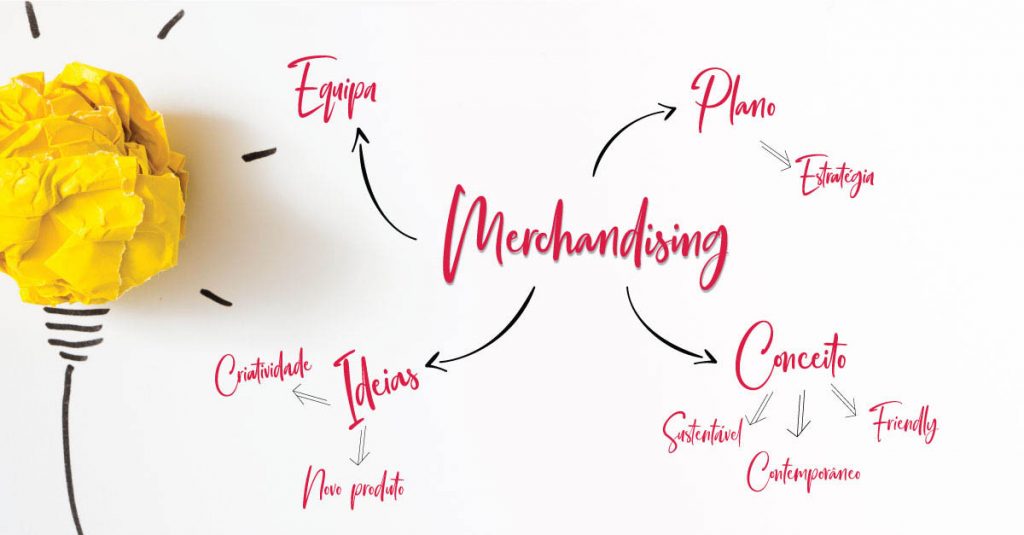Merchandising is intrinsically connected to marketing and the need to sell in the best possible way. After talking about what graphic production is and what it is for, we are now dedicated to merchandising and how a good strategy can impact your business.
What is merchandising?
Phillip Kotler, considered one of the fathers of marketing and author of the famous marketing bible, Mercator, defines merchandising as all the activity that accompanies the product launch cycle, starting with the positioning at points of sale and ending with the impact that all actions have in the consumer.
In other words, it is all the actions we take to make our product salable.
In order to have a good merchandising strategy, it is necessary to plan it. According to the publicist Eduardo Silva, five elements must be taken into account:
- The product, which is always at the center of any action;
- The place where the product will be distributed;
- The moment when it will be marketed;
- The quantity, neither less nor more;
- And finally, the price, which should be competitive.
If it’s true that merchandising was limited to the experience in physical stores, TV, radio and offline, today, the options are vast, using digital marketing. However, we will now focus on physical merchandising as well as TV and radio.
How can I enhance my product?
There are several factors to take into account when thinking about a good merchandising strategy. Marketeer Neil Patel lists a few:
- A good visual identity is key – we mentioned earlier that the eyes also eat and, when it comes to sales, there is no more absolute truth. The product may be the best of all, but if it’s not appealing to the eye, more specifically at its physical point of sale, the sales results may not be the most desirable. The color, packaging, everything is a factor to always be considered taking into account the final consumer;
- Editorial merchandising – also known as product placement. Transposing a brand from the point of sale to television, for example, or radio, does not need to happen only through pure and hard advertising. It can happen by promoting products in a more subtle way, for example, in films. There are several success stories, which you can explore better here;
- The point of sale is also important – as mentioned above about a good visual identity, it is important to take into account the organization of the products at the point of sale, the light, the dynamics implemented, in order to better capture the customer’s attention to consume them. Here, the technology implemented can play a differentiating role;
- Promotions, coupons and more – there are several ways to attract the customer, one of which is to present advantages for the purchase of a certain product, namely samples at the point of sale, a discount coupon or a promotion. Thus, you will be able to increase the visibility of your product and boost your sales.
We do not focus on digital merchandising now, but it is important to always have a digital strategy associated with selling a product: defining a strategy for social networks, digital campaigns, choosing the right influencers is key to selling ‘well’ a product.
How, then, to put a merchandising strategy into practice?
First of all, know who you sell to. You should know your target audience, who they are, what they do, what they like and what they don’t like. Then, it is important to set clear goals and objectives for your strategy and then take action. Create incentives to attract your audience, have a good user experience at the point of sale and also at other points of contact of the brand. Set periods for promotions and don’t forget to focus on why your product is unique.
Ready for the fight? Contact us to find out more about the best merchandising strategy for your product.
Rita Justo, press officer at Media em Movimento
Bio

